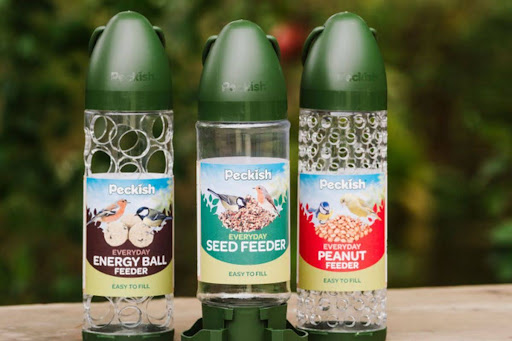In the hustle and bustle of our daily lives, it’s easy to overlook the simple pleasures that nature has to offer. One such joy is the enchanting presence of wild birds in our surroundings. Birdwatching can be a therapeutic and delightful hobby, connecting us to the beauty of the natural world. To attract these feathered friends to our yards, bird feeders play a crucial role, particularly those designed for wild bird feeding. In this post, we will delve into the fascinating realm of bird seed feeders, exploring their types, benefits, and best practices for attracting a diverse array of wild birds.
Understanding Bird Seed Feeders:
Bird feeders are essentially devices designed to supply bird food, and bird seed feeders are one of the most popular choices among bird enthusiasts. These feeders come in various designs, each catering to different bird species and feeding preferences. From hanging feeders suspended from tree branches to ground feeders for ground-feeding birds, the options are vast.
Types of Bird Seed Feeders:
Tube Feeders:
Tube feeders are cylindrical, with multiple feeding ports along the length of the tube. These feeders are excellent for dispensing seeds like sunflower, millet, and nyjer. The design of tube feeders helps in preventing larger birds and squirrels from monopolizing the feeding station.
Hopper Feeders:
Hopper feeders, also known as house feeders, have a container-like structure with an open tray at the bottom. They can accommodate a larger quantity of birdseed and are suitable for a variety of seeds, attracting a diverse range of bird species.
Platform Feeders:
Platform feeders are flat surfaces that offer ample space for birds to perch and feed. They are ideal for larger birds like cardinals and jays and can accommodate a mix of seeds, fruits, and even mealworms.
Suet Feeders:
Suet feeders are designed to hold suet cakes, a high-energy food source made from animal fat. These feeders attract insect-eating birds like woodpeckers and nuthatches.
Benefits of Bird Seed Feeders:
Biodiversity and Conservation:
Bird seed feeders contribute to the conservation of avian species by providing a reliable food source, especially during harsh weather conditions. This, in turn, helps maintain biodiversity and supports the overall health of local bird populations.
Educational Opportunities:
Installing wild bird feeders can be an excellent educational tool for children and adults alike. Observing different bird species in their natural habitat fosters an appreciation for wildlife and environmental conservation.
Stress Relief and Well-being:
Birdwatching has been linked to stress reduction and improved mental well-being. The peaceful moments spent observing birds at your feeders can offer a welcome escape from the demands of everyday life.
Connecting with Nature:
Bird feeders create a direct connection between humans and the natural world. They bring the wonders of nature right to your doorstep, allowing you to witness the beauty of wild birds up close.
Best Practices for Attracting Birds:
Strategic Placement:
Choose a location for your bird seed feeder that is easily visible and safe for birds. Placing feeders near trees or shrubs provides birds with nearby perches, allowing them to observe their surroundings for potential predators.
Regular Cleaning:
Maintaining cleanliness is crucial for the health of the birds. Clean your feeders regularly to prevent the growth of mould and the spread of diseases. Use a mild solution of water and vinegar to clean the feeders, and ensure they are thoroughly dried before refilling.
Varied Seed Mix:
Offering a diverse seed mix attracts a wider range of bird species. Consider incorporating sunflower seeds, millet, nyjer, and other seeds to cater to the varied dietary preferences of different birds.
Water Source:
Birds not only need food but also require water for drinking and bathing. Providing a nearby water source, such as a birdbath, complements the offerings from your bird seed feeders.
Conclusion:
In the ever-evolving urban landscape, where nature often takes a backseat, bird seed feeders emerge as beacons of hope, bridging the gap between humans and the mesmerizing world of wild birds. These feeders not only enhance our immediate surroundings but also contribute to the broader ecosystem by supporting bird populations. By understanding the diverse types of bird seed feeders and implementing best practices for their use, we can create a haven for our avian friends, fostering a harmonious coexistence between humans and the delightful creatures that grace our skies.

